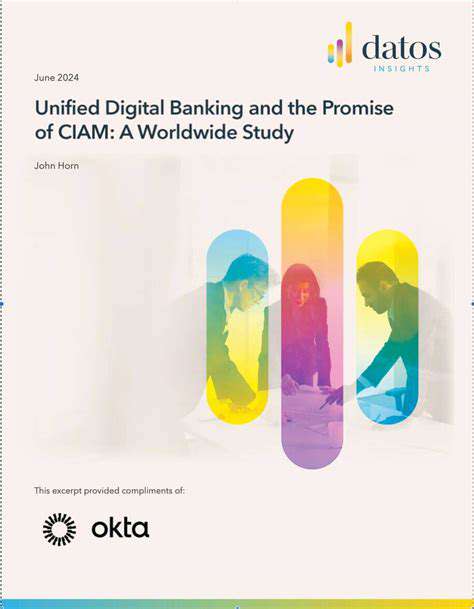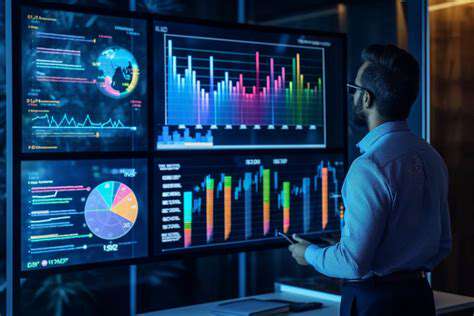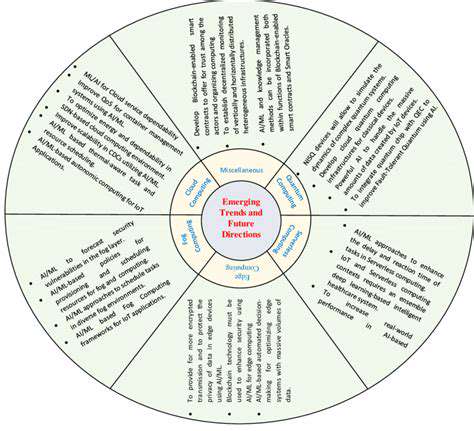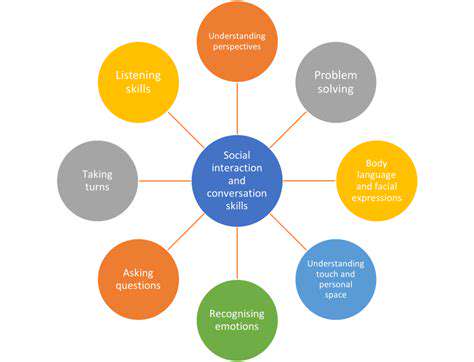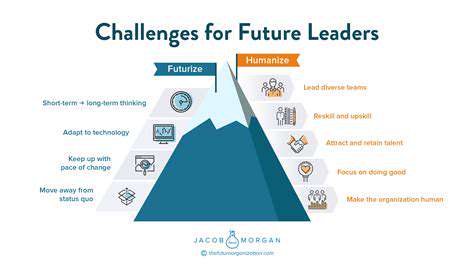The Role of Sensory Feedback in Immersive Design
Haptic feedback, or the sense of touch, is often overlooked in immersive design, yet it can be a powerful tool for enhancing user engagement and creating a more holistic experience. In virtual reality or augmented reality environments, haptic devices can simulate a wide range of textures, from the smoothness of silk to the roughness of stone, allowing users to experience the environment more realistically.
Integrating haptic feedback into interactive elements, such as objects or surfaces that can be manipulated, allows for a more intuitive and engaging user experience. Imagine the difference between clicking a button in a virtual environment and feeling the satisfying click of a physical button, creating a profound sense of presence and interaction.
Olfactory Design: Adding another Dimension to Immersion
Olfactory design, often considered the most underutilized sense in immersive design, holds significant potential for creating powerful and memorable experiences. Imagine walking through a virtual forest, and smelling the fresh scent of pine needles and damp earth. Olfactory cues can evoke powerful memories and emotions, enhancing the sense of presence and realism.
Although incorporating scent into immersive experiences is still in its early stages, the technology is rapidly advancing. The possibilities of using scent to create immersive and evocative experiences are vast, offering a novel way to enhance user engagement and emotional response.
The Role of Proprioception in Physical Presence
Proprioception, the sense of body position and movement, is an essential component of physical presence in immersive environments. When designing immersive experiences, considerations should be given to how the user's body position and movements are reflected within the virtual environment. This creates a more integrated and natural experience, allowing the user to feel more connected to their virtual body and surroundings.
By carefully considering how the user's movements are translated into the virtual environment, designers can create a more intuitive and immersive experience. This includes ensuring the user's actions in the virtual world are reflected in their physical body and vice versa, creating a more seamless transition between the real and virtual.
Beyond Sight and Sound: Expanding the Sensory Spectrum
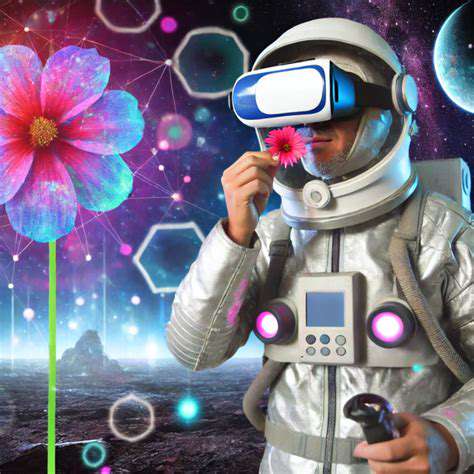
Expanding Sensory Experiences
Beyond the traditional realms of sight and sound, our understanding of sensory experiences is rapidly evolving. We are increasingly recognizing the importance of incorporating other senses, such as touch, smell, and taste, into our daily lives and creative endeavors. This expansion allows for a more holistic and profound connection with the world around us, enriching our perception and appreciation of the environment.
The integration of diverse sensory inputs can lead to innovative solutions in various fields. For example, in the design of user interfaces, incorporating tactile feedback can enhance user experience and improve accessibility. This multi-sensory approach to design can create a more intuitive and engaging interaction with technology. Furthermore, exploring the potential of smell and taste in art and architecture opens up exciting new avenues for creative expression and sensory stimulation.
The Role of Technology in Sensory Exploration
Technological advancements are playing a crucial role in broadening our sensory horizons. Virtual reality (VR) and augmented reality (AR) technologies offer immersive experiences that transcend traditional limitations, allowing users to interact with environments and stimuli in unprecedented ways. This technology pushes the boundaries of what's possible in terms of sensory immersion, inviting us to explore entirely new dimensions of perception.
Furthermore, advancements in neurotechnology are providing insights into how our brains process and interpret sensory information. This knowledge can lead to innovative therapies and interventions for sensory processing disorders, and it also allows us to better understand how our brains create our experience of the world. Such studies are essential for developing more effective ways to interact with people with varying sensory needs.
The Impact on Art and Creativity
The exploration of expanded sensory experiences significantly impacts artistic expression and creativity. Artists are now pushing boundaries by incorporating tactile materials, olfactory installations, and even gustatory elements into their works, prompting viewers to engage with art on a more profound and multi-sensory level. This broader approach to artistic creation can lead to more evocative and immersive experiences for the audience.
The incorporation of these additional senses allows artists to create more dynamic and engaging exhibitions, pushing the creative envelope and offering visitors novel ways to connect with the artwork. From the subtle aroma of a curated scent to the tactile texture of a sculpture, these artistic explorations offer a unique and powerful way to engage all of our senses.
The Future of Sensory Experiences
The future of sensory experiences is brimming with potential. As technology continues to advance, we can anticipate even more innovative and immersive ways to interact with the world around us. This includes the development of personalized sensory experiences tailored to individual preferences and needs. These developments hold significant promise for improving accessibility and enriching lives for everyone.
Moreover, we can anticipate collaborations between artists, scientists, and technologists to create entirely new forms of artistic expression. This interdisciplinary approach will undoubtedly lead to groundbreaking discoveries and creations that will revolutionize the way we engage with our senses and the world around us. Imagine experiences that seamlessly integrate sight, sound, touch, smell, and taste in a symphony of sensations.
Haptics: Transforming Digital Interactions into Physical Experiences
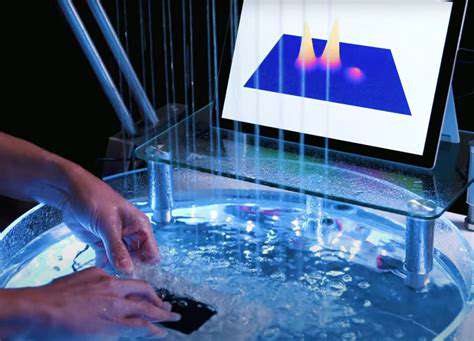
Haptic Feedback: A Deeper Dive
Haptic feedback, a technology that uses physical sensations to provide users with a more immersive and interactive experience, is rapidly evolving. This technology is not just about vibrations; it's about creating a tangible connection between the digital world and the physical one. It's a critical component in the future of virtual and augmented reality, gaming, and even everyday interactions with technology.
From subtle vibrations to more complex tactile sensations, haptic feedback aims to bridge the gap between abstract digital interfaces and tangible user experiences. This allows for a more intuitive and engaging interaction, making technology feel more natural and less abstract.
Applications in Virtual Reality
In virtual reality (VR), haptic feedback is crucial for creating a sense of presence and realism. Imagine feeling the texture of a virtual object, or experiencing the impact of a virtual punch. This level of immersion is key to creating truly realistic and engaging VR experiences. Haptic feedback can greatly enhance user engagement and immersion by providing physical sensations that complement the visual and auditory components of VR.
Gaming Experiences Enhanced
Gaming experiences are being revolutionized by haptic feedback. Players can now feel the impact of blows, the vibration of a weapon, or the texture of a surface, providing a more visceral and immersive experience. This tactile feedback significantly enhances the sense of presence and engagement in the game world. This is a major leap forward in interactive entertainment, creating a more dynamic and engaging experience.
The ability to feel the feedback from in-game interactions adds another layer of realism, making the experience feel more genuine and less abstract.
The Future of Haptic Technology
The future of haptic technology looks promising, with ongoing research and development focused on more sophisticated and nuanced feedback mechanisms. Researchers are striving to create devices that can reproduce a wider range of textures, pressures, and vibrations, making interactions with virtual environments even more realistic and engaging.
This continued advancement promises to push the boundaries of what's possible in terms of digital interaction, ultimately leading to more intuitive and immersive user experiences across various applications.
Medical and Therapeutic Applications
Beyond entertainment, haptic technology has potential applications in medical and therapeutic settings. Imagine using haptic feedback to provide realistic surgical training, or to help patients with rehabilitation exercises. This technology offers promising avenues for improving patient outcomes and enhancing therapeutic interventions.
The ability to simulate real-world sensations can be invaluable in fields like physical therapy and surgery, allowing for more effective training and treatment.
Accessibility and Inclusivity
Haptic technology can also play a crucial role in making technology more accessible and inclusive for people with disabilities. By providing alternative ways to interact with digital interfaces, haptic feedback can open up new possibilities for engagement and participation in the digital world. This focus on accessibility is a critical component of the future of technology, striving for broader usability and inclusivity.
Challenges and Considerations
While haptic technology holds immense potential, there are also challenges to overcome. These include developing more affordable and user-friendly devices, as well as ensuring the safety and comfort of users. Addressing these challenges will be crucial to the widespread adoption and integration of haptic technology into everyday life.
The development of haptic technology is an ongoing process, and continuous innovation is necessary to improve its effectiveness and accessibility across diverse applications.
Motion detection is a crucial aspect of pet cameras, allowing you to monitor your furry friend's activities remotely. This feature is especially helpful for peace of mind, enabling you to see if your pet is behaving as expected, whether they're napping, playing, or exploring. It's an invaluable tool for owners who need to know what their pets are doing when they're away from home. Real-time alerts can be incredibly useful, as they can notify you of any sudden movements, potentially signaling a need for immediate attention or simply providing a glimpse into your pet's daily routine.
Olfactory and Gustatory Experiences: Expanding the Sensory Landscape

Olfactory Perception
The sense of smell, or olfaction, plays a crucial role in our overall sensory experience. It's intimately connected to memory and emotion, often triggering vivid recollections of past experiences. The olfactory system is unique in its direct connection to the limbic system, the brain region associated with emotional processing. This explains why scents can evoke powerful feelings and memories. We often associate specific scents with particular places or times, and these associations are often deeply personal and meaningful.
Olfactory receptors in the nasal cavity detect airborne molecules, translating them into electrical signals that are sent to the brain. This intricate process allows us to distinguish an enormous range of scents, from the refreshing aroma of a summer rain shower to the pungent odor of burnt toast. Furthermore, our perception of odors can be influenced by various factors, including our personal experiences, cultural background, and even our current emotional state.
Gustatory Sensations
Taste, or gustation, is another essential sensory modality that contributes significantly to our enjoyment of food and drink. The taste buds on our tongue detect different chemical compounds in the food we consume, allowing us to discern flavors ranging from sweet to sour, salty to bitter. This ability to perceive and distinguish tastes is critical for ensuring we consume the necessary nutrients and avoid potentially harmful substances.
While taste receptors are primarily located on the tongue, taste perception is a complex interplay of signals from different parts of the mouth. The textures, temperatures, and even smells of food all contribute to the overall gustatory experience. This complex integration of sensory information allows us to appreciate the full spectrum of flavors in a meal.
Integrating Olfaction and Gustation
The integration of olfactory and gustatory experiences is fundamental to our appreciation of food. The combined information from smell and taste creates a richer and more nuanced sensory experience. Imagine a delicious meal—the aroma of spices wafts through the air, and the flavors dance on your tongue. Both senses contribute to the overall pleasure and satisfaction derived from the experience.
The synergistic effect of these two senses is especially important for identifying the safety and quality of food. The complex interplay between scent and taste is what allows us to distinguish a fresh, ripe fruit from one that is overripe or spoiled. This ability is crucial for our survival and well-being. The integration of these two senses enhances our experience of the world around us.




